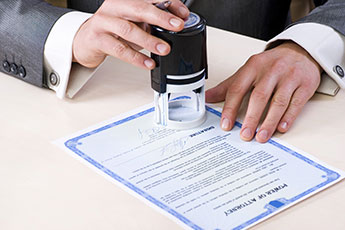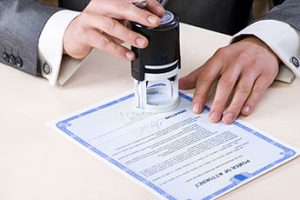
This is a guest post by Eric Weisbrot.
 Millions of goods are imported into and exported out of the United States each year, and US shippers are a crucial part of each transaction.
Millions of goods are imported into and exported out of the United States each year, and US shippers are a crucial part of each transaction.
Importers and exporters rely on bonded carriers to get their products from one location to the next, but there are specific requirements they must meet in order to be eligible for the job.
One of the most pressing requirements is the need for a customs bond that works to protect the Customs and Border Protection agency from illegitimate carriers and transport of goods. Getting a customs bond as a US carrier requires some know-how, starting with an understanding of what a customers bond is.
Understanding Surety Bonds for Importers and Exporters
Many individuals use surety bonds and insurance interchangeably, but these two terms are different on several levels. Surety bonds, specifically those used for importers and exporters, are a type of insurance coverage for the CBP, not the carrier, importer, or exporter. The individual who holds the bond is known as the principal, while the beneficiary is the US Customs and Border Protection Agency. A surety company offers customs bonds to importers and exporters who meet certain qualification criteria.
When a claim is made against a surety bond for a customs professional, this means that the requirements put in place by the CBP were not satisfied when transporting goods. The surety agency pays for the claim amount on behalf of the carrier, importer, or exporter, and then the amount is repaid over time. This is essentially a form of credit extended to the carrier from the surety agency, which makes it different from standard insurance.
The Process for Obtaining a Customs Bond
Getting a customs bond starts by recognizing the two broad categories of bonds that may be required: a single transaction bond or a continuous bond. Here’s when each may be required.
- Single transaction bonds — these are for one-off transactions and importations, typically in the amount of the goods being imported. For shippers who do not import goods on a regular basis into the US, a single transaction customs bond is all that is needed.
- Continuous bonds — these bonds are for carriers who bring goods into the US on a regular basis. The bond amount covers several transactions over time, and the cost is based on a percentage of the duties, taxes, and fees for such transactions.
Once you determine the type of customs bond you need, an application for a new bond is submitted to a surety bond agency. They will review your application details, including your business information, financial history, and reason for needing a bond. Once approved, the bond is sent to you directly. You will then sign the bond, maintain a copy for your records, and then send the bond back to the agency.
US carriers do not need to submit the bond to the CBP. Instead, the surety agency that helped secure the bond processes this filing on behalf of the carrier. In most cases, the entire process takes ten days. While the bond is in process, carriers need to remember that any claims due to unpaid duties, taxes, or fees are still their responsibility.
Getting a customs bond as a US carrier, importer, or exporter is not a challenging process, but it does take some time to get through from start to finish. To make the process of getting a customs bond easy, be sure to know which type of customs bond is required based on the frequency of transactions you complete. Your surety agency will work with you once that information is known to get the customs bond you need.
About the Author

Eric Weisbrot is the Chief Marketing Officer of JW Surety Bonds. With years of experience in the surety industry under several different roles within the company, he is also a contributing author to the surety bond blog.
Discover more from reviewer4you.com
Subscribe to get the latest posts to your email.






